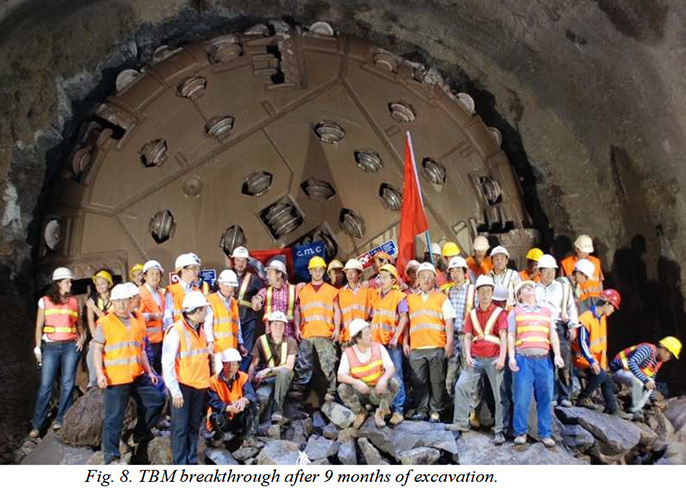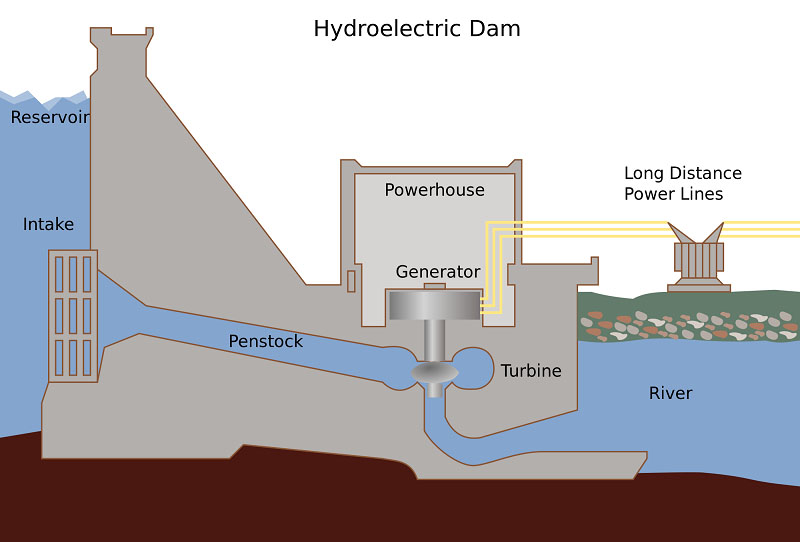
Hydropower Generation near Thakhek Loop in Laos - Go Back to Hydropower Projects Web Page --- Home
This web page explains how flowing water can be used to create electricity and summarizes the various types of hydropower projects ongoing and planned in the Thakhek Loop area of Laos - Bolikhamxay and Khammouane Provinces. In 2020 this area was producing about one third of all hydropower output in Laos with the biggest projects only recently completed. Hydroelectric power is a form of water power that creates electricity.
Sunshine and Gravity do the Work - Sunshine transfers energy from the sun to heat water in our oceans and other water bodies causing evaporation that transfers energy into water vapor in clouds. When water vapor condenses and rain falls on mountains some of that energy is transferred to water in rivers and lakes. As that water flows naturally by gravity to lower levels it releases some of that energy on the way down. A body of water at a higher elevation has more kinetic energy (potential energy) stored in it than a similar body of water at a lower level. We can capture some of the energy released on the way down by placing turbine blades into the downward flow which spins the blades and a rod connected to a generator with magnets. This induces or creates an electrical current that can be transported by electric transmission lines to places far away. Once a hydroelectric system is in operation the ongoing costs are low making the whole process quite efficient. Sunshine, rain and gravity are free.
A conventional hydropower dam project with large reservoir is displayed below:

A Run-of-River hydropower project with small or no reservoir is displayed below:
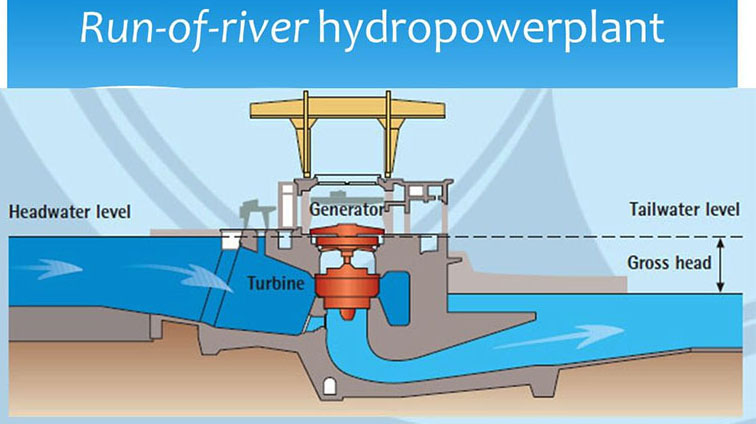
A typical Hydropower Plant is displayed below:
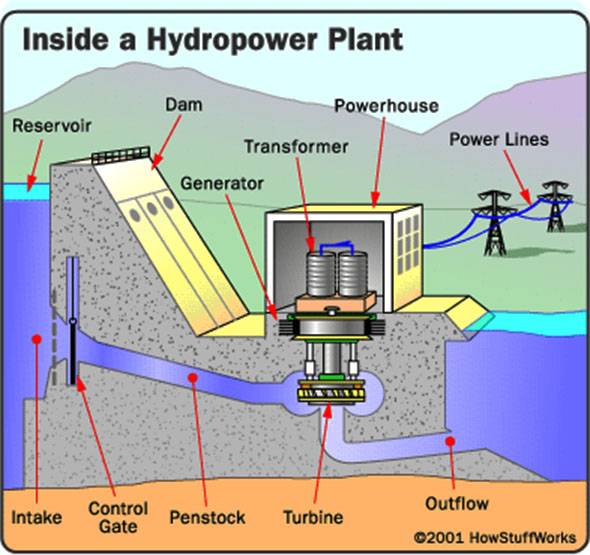
Figure 1 below shows a typical complete hydropower project layout from water collection to power distribution.
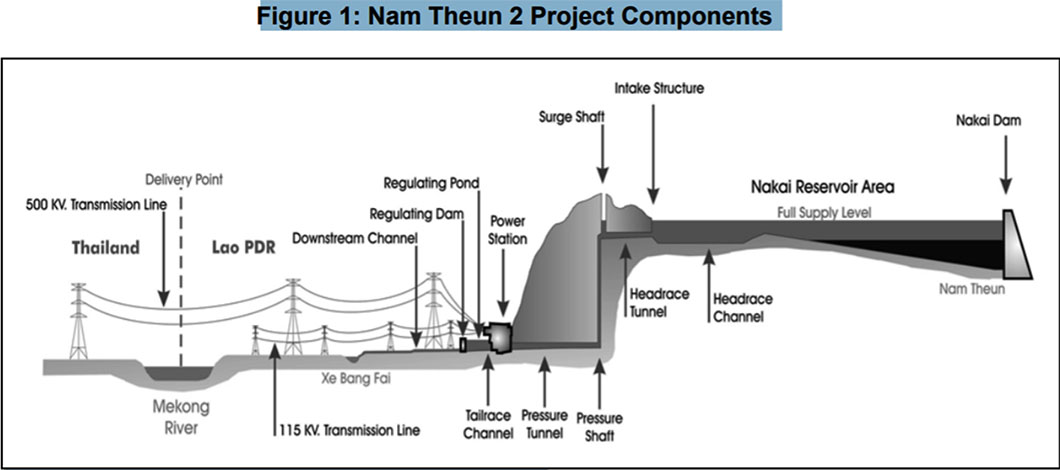
Some of the Lao hydropower projects are among the largest scale projects anywhere.
Tunnel-boring machine (TBM) image below used for Theun-Hinboun Dam Expansion project.
